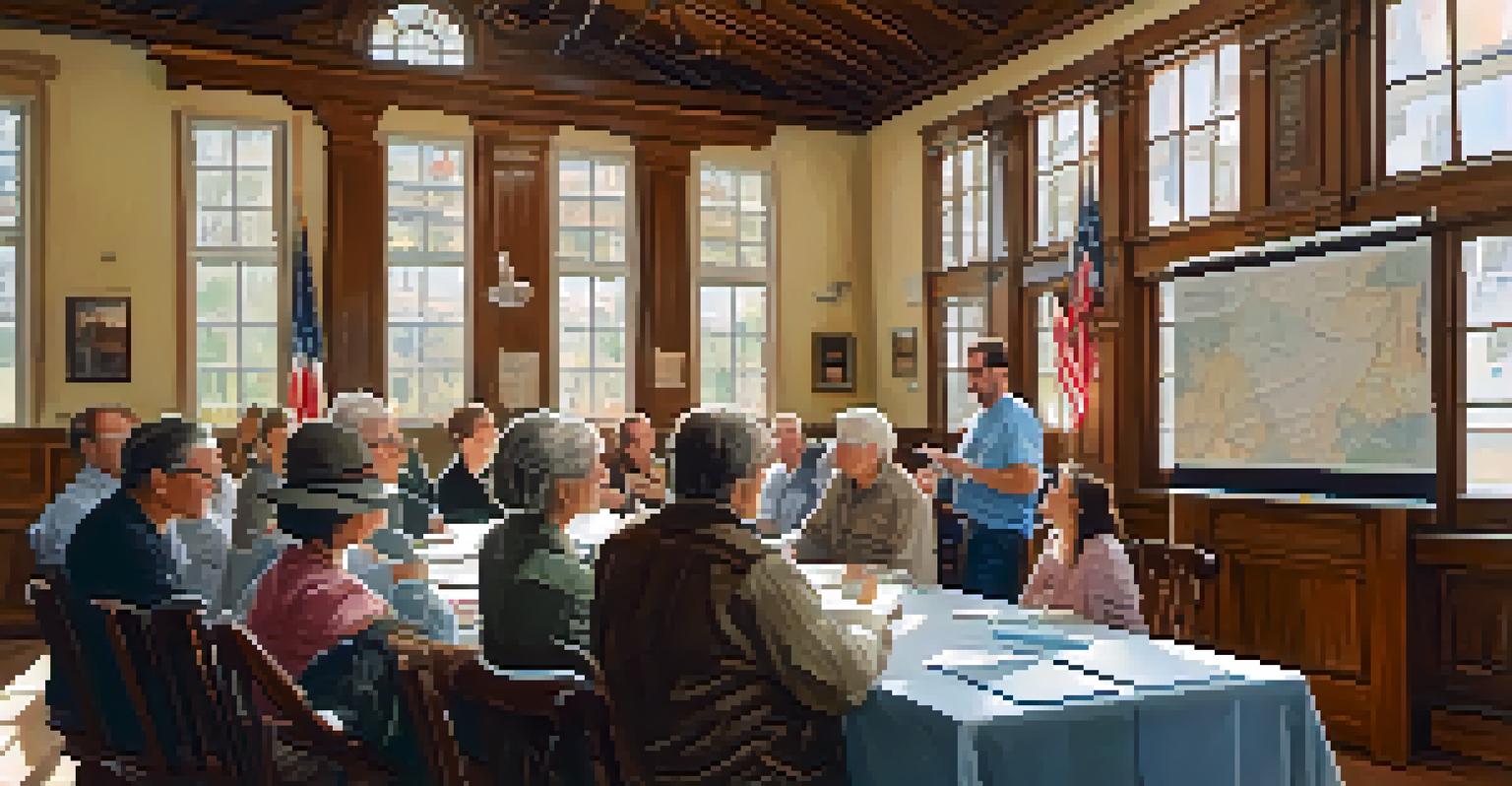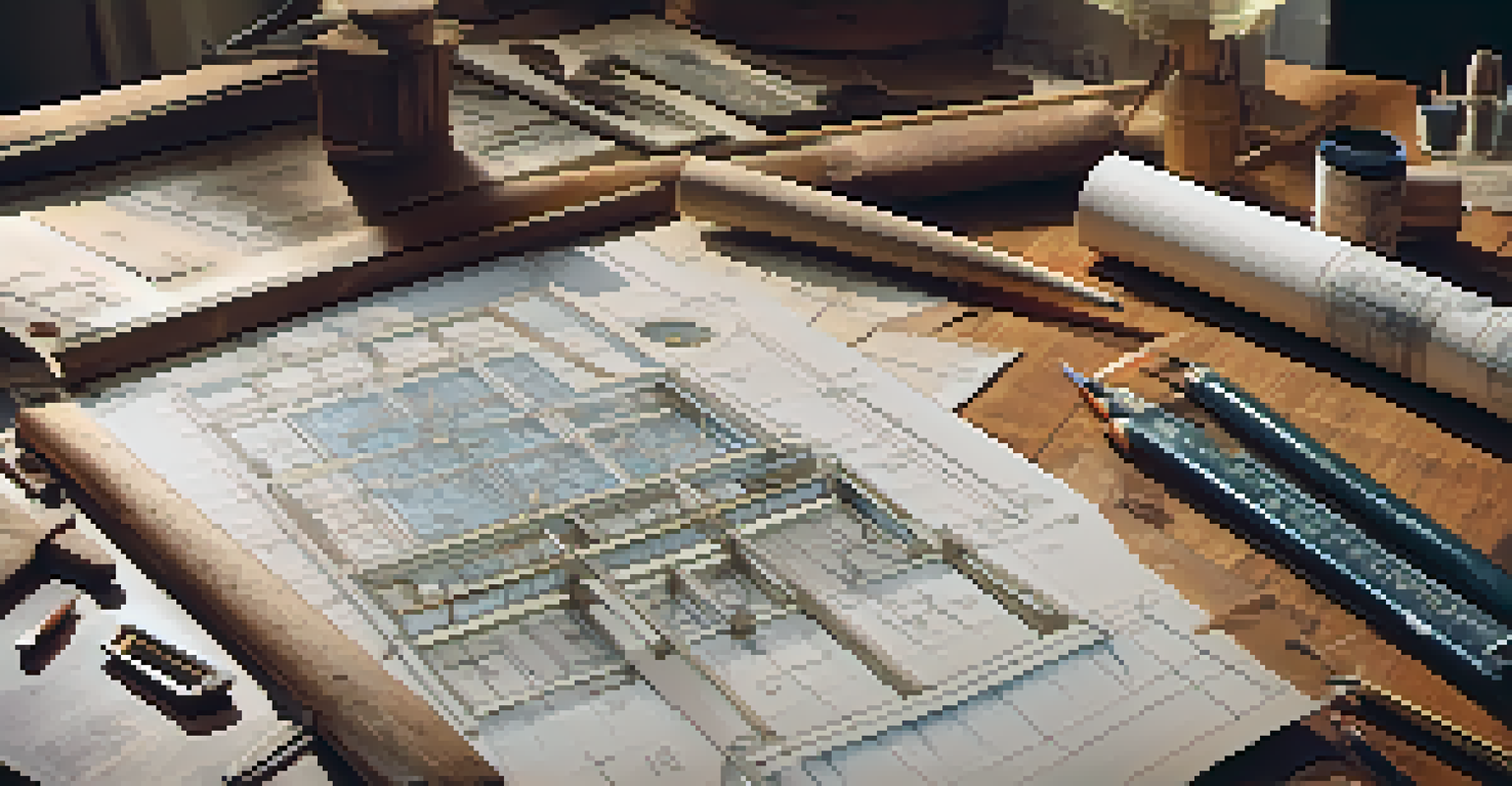The Process of Securing Permits for Historic Renovations

Understanding the Importance of Historic Preservation
Historic preservation isn't just about maintaining old buildings; it’s about honoring our cultural heritage. Ensuring that these structures are preserved allows future generations to connect with their history. When undertaking a renovation, it's vital to recognize the significance of the building and the role it plays in the community.
Preservation is a form of stewardship, and the buildings we cherish are a testament to our past.
Preserving historic sites can also enhance property values and promote tourism. Think of it as keeping a piece of the past alive, benefiting both the community and the economy. As you embark on your renovation journey, consider how your project can contribute to the broader narrative of the area.
Understanding the importance of these structures can help you navigate the complexities of the permitting process with a clearer vision. This foundational knowledge sets the stage for respectful and responsible renovations that honor the building's legacy.
Researching Local Historic Preservation Laws
Before diving into the renovation process, it’s essential to familiarize yourself with local historic preservation laws. Each city or town has its own set of regulations that govern how historic buildings can be modified. This research can save you from potential setbacks and fines down the road.

Start by visiting your local planning or preservation office, where you can find valuable resources and guidance. Many municipalities have specific guidelines that outline what is permissible and what requires special consideration. Knowing these rules upfront can provide clarity and streamline the approval process.
Preservation Benefits Community
Historic preservation enhances cultural heritage and boosts property values and tourism.
Additionally, engaging with local historical societies can offer insights into the significance of your building. They can help you understand its history and may even provide resources for best practices in preservation.
Gathering Necessary Documentation for Your Project
Once you're aware of the preservation laws, the next step is to gather all necessary documentation. This typically includes architectural plans, site plans, and photographs of the existing structure. Having a comprehensive package prepared can make the permitting process smoother and more efficient.
Historic preservation is an investment in our future, as much as it is a celebration of our past.
Documentation should accurately reflect both the current state of the building and your proposed changes. Including detailed descriptions and rationale for your renovations can help reviewers understand your intentions. It’s like telling a story, where the past meets the future in a harmonious narrative.
Remember, the more thorough your documentation, the easier it will be for authorities to make informed decisions. This preparation not only expedites the process but also showcases your commitment to preserving the building's historical integrity.
Submitting Your Permit Application
With your documentation in hand, it’s time to submit your permit application. This step can feel daunting, but breaking it down into manageable parts can ease the process. Make sure to follow the specific submission guidelines provided by your local authority.
Include all required forms and supporting documents to avoid delays. If possible, seek feedback from professionals experienced in historic renovations. They can provide insights into common pitfalls and help you present your application in the best light.
Know Local Preservation Laws
Familiarizing yourself with local historic preservation laws is crucial to avoid setbacks during renovation.
Once submitted, be prepared for a waiting period. Patience is key, as the review process can take time, particularly for complex projects. However, this is also an opportunity to refine your plans based on initial feedback, ensuring a smoother path forward.
Navigating the Review Process with Local Authorities
After submitting your application, it enters the review process, where local authorities assess its compliance with preservation laws. This stage often involves public hearings, allowing community members to voice their opinions. Engaging with the community can enhance support for your project and demonstrate your commitment to transparency.
During the review, be prepared to answer questions and provide additional documentation if requested. Sometimes, authorities may suggest modifications to align your plans with preservation standards. Embracing this feedback can ultimately result in a more successful renovation.
Remember, this process is not just about compliance; it's an opportunity to collaborate with local stakeholders. Building relationships during this stage can foster goodwill and a sense of shared responsibility for preserving your community's history.
Addressing Potential Challenges and Delays
As with any project, challenges can arise during the permit process. Delays may stem from various factors, including additional requirements or community objections. It’s important to remain flexible and open to adjusting your plans when necessary.
Sometimes, issues may emerge that require a reevaluation of your approach. For instance, you might discover that certain materials are restricted or that specific design elements need to be altered. Viewing these challenges as opportunities for growth can lead to innovative solutions.
Prepare Thorough Documentation
Gathering comprehensive documentation streamlines the permitting process and showcases your commitment to preserving history.
Staying proactive in communication with local authorities and community members can help mitigate frustrations. Being transparent about your project can foster collaboration and minimize misunderstandings, setting a positive tone for your renovation journey.
Final Steps: Obtaining Approval and Starting Renovations
Once your application has successfully passed through the review process, congratulations! You can now obtain the necessary approvals and permits to begin your renovations. This moment is not just a formality; it’s a validation of your hard work and dedication to preserving history.
With permits in hand, it’s time to assemble your team of contractors and craftsmen who share your vision. Make sure they are well-versed in historic preservation techniques to ensure that renovations are completed with care and respect for the original structure. This collaboration is crucial for achieving the desired results.

As you embark on this exciting chapter, keep in mind the importance of maintaining open communication with all stakeholders. Regular updates and check-ins can help ensure that the renovation stays on track, ultimately leading to a successful transformation that honors the past.